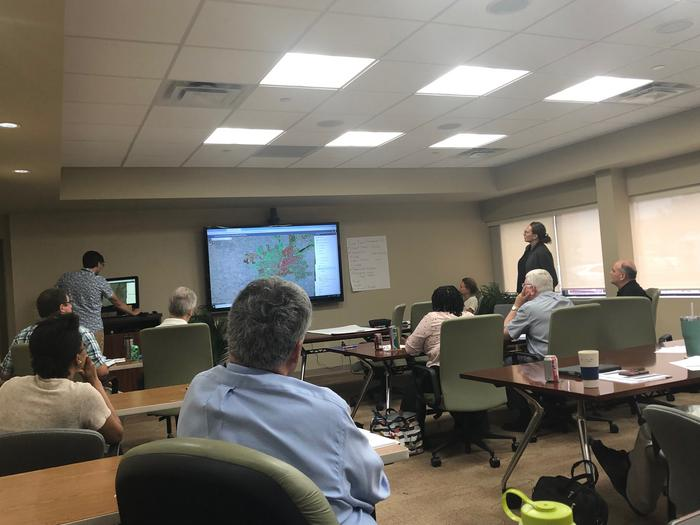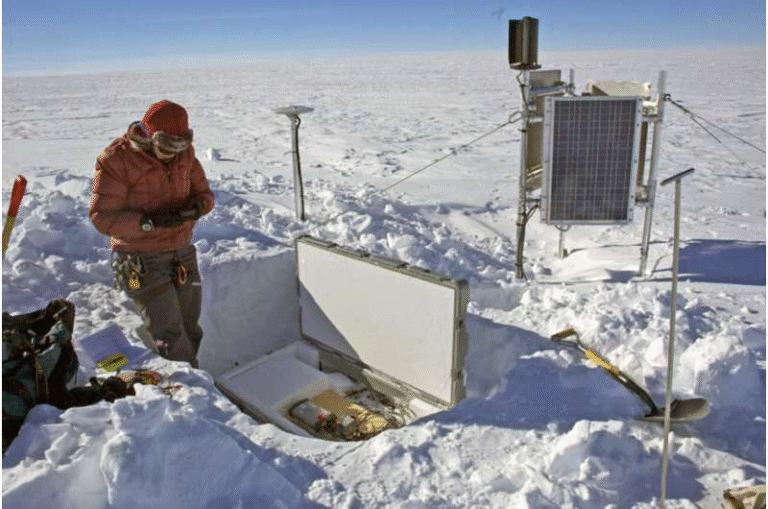Scientists Warn Humanity Is Speeding Toward Climate Chaos as Earth’s Vital Signs Flash Red

A new scientific report warns that humanity is edging dangerously close to “climate chaos”, with many of Earth’s life-support systems now under extreme stress. The 2025 State of the Climate Report, published in the journal BioScience, paints one of the starkest pictures yet of a planet in crisis. According to the findings, last year’s surge in fossil fuel use and record global temperatures have pushed many environmental indicators — or “vital signs” — to their most alarming levels since records began.
A Planet on the Brink
The study, led by William Ripple of Oregon State University and co-authored by scientists from institutions around the world, analyzed 34 key planetary indicators — from atmospheric carbon levels and ocean heat to deforestation and ice melt. Out of these, 22 are now flashing red, meaning they are at record highs or moving rapidly in the wrong direction.
The authors describe Earth as being on the brink of systemic breakdown, with trends showing faster warming, rising greenhouse gases, collapsing ice sheets, and widespread ecological damage. In 2024, global fossil fuel use rose by 1.5%, despite pledges to reduce emissions, making it another record-breaking year for oil, gas, and coal consumption.
Meanwhile, energy-related emissions of carbon dioxide and other heat-trapping gases hit an all-time high. This is precisely the opposite of what should be happening if the world wants to limit warming to safer levels under the Paris Agreement.
The report also revealed that 2024 was likely the hottest year in at least 125,000 years, surpassing even the severe El Niño-fueled heat of recent decades. Scientists say this level of heat is now driving a vicious cycle of disasters — heat waves, floods, wildfires, and hurricanes — that are reshaping life on every continent.
Earth’s “Vital Signs” Are Deteriorating
The scientists track what they call Earth’s vital signs — key measures of the planet’s health. These include ocean temperatures, polar ice, forest cover, methane concentrations, and global energy use.
Among their findings:
- Ocean heat content has reached the highest level ever recorded, causing severe coral bleaching that affected about 84% of the world’s coral reef area.
- Tree cover loss from fires hit record levels in 2024. In tropical primary forests, fires increased by around 370% compared with the previous year.
- The Greenland and Antarctic ice sheets continue to lose mass at accelerating rates, while Arctic sea ice is shrinking to new lows.
- The atmospheric concentration of carbon dioxide continues to climb, reaching another record in early 2025.
- Human activity remains out of balance with the planet’s capacity to recover. Population growth, livestock numbers, meat consumption, and global GDP are all at all-time highs — intensifying demand for resources and driving emissions higher.
These interconnected problems, the authors warn, are pushing the Earth system closer to irreversible tipping points. If these are crossed — such as the collapse of major ice sheets, thawing of carbon-rich permafrost, or the dieback of the Amazon rainforest — the resulting feedbacks could make further warming unstoppable.
Fossil Fuels Still Dominant, but Change Is Possible
Despite the grim outlook, there are glimmers of progress. The report notes that China’s fossil fuel use fell slightly in the first half of 2025 — a remarkable shift for the world’s largest carbon emitter. The country has been installing renewable energy at a pace unmatched anywhere else, adding more solar and wind capacity in a single year than most nations have in total.
In California, about two-thirds of electricity generation in 2023 came from clean energy sources. These examples show that the energy transition is possible, but the scientists stress it must happen much faster and on a global scale.
Overall, fossil fuels still dominate the world’s energy mix, outpacing renewables by about 31 to 1. As a result, the planet is warming faster than expected. The report warns that avoiding even fractions of a degree of additional warming is now crucial for limiting damage.
The Human and Political Challenge
The report does not shy away from criticizing political leaders who are reversing climate policies. Scientists warn that efforts by governments to expand oil, gas, and coal production are seriously undermining global climate goals.
For instance, policies in the United States under the Trump administration have focused on boosting fossil fuel extraction, rolling back environmental protections, and sidelining climate initiatives. Researchers say this approach risks slowing or even reversing global progress.
Some scientists argue that when major economies step back, other nations must lead, strengthening international cooperation ahead of key events like the upcoming United Nations Climate Conference (COP30) in Brazil this November. That summit could become a turning point — if countries commit to phasing out fossil fuels, cutting overconsumption, and investing in large-scale ecosystem restoration.
The Inequality Factor
A striking part of the report focuses on inequality. Researchers found that two-thirds of global warming since 1990 can be traced to the wealthiest 10% of people, whose high-consumption lifestyles and investment choices drive much of the pollution.
This means that solving the climate crisis is not just about technology — it’s about changing how societies consume, value nature, and define progress. The scientists urge wealthy nations and individuals to reduce overconsumption, adopt plant-based diets, and prioritize low-carbon living.
They also emphasize the need to protect and restore ecosystems, from forests and mangroves to peatlands and wetlands, which naturally absorb carbon and buffer against floods and storms.
The Narrowing Window of Time
The authors warn that the window to prevent catastrophic outcomes is rapidly closing. If emissions continue at their current pace, several climate tipping points could be triggered within decades, making recovery impossible.
However, they also highlight that acting now brings immediate and long-term benefits. Rapid emission cuts, they note, would improve air quality, protect biodiversity, and stabilize food systems — all while reducing the risks of future disasters.
Avoiding every fraction of a degree of warming, they stress, is vital. Each small step — cleaner energy, reduced waste, sustainable diets — adds up to a meaningful difference in preventing irreversible change.
What This Means for South Asia and the World
Regions like South Asia are particularly vulnerable. Rising temperatures, intense monsoons, melting Himalayan glaciers, and sea-level rise all pose major threats. Low-lying areas like Bangladesh and coastal India face growing risks of flooding and salinity intrusion. Meanwhile, heat waves are becoming more frequent and deadly, putting millions at risk.
The findings from the report serve as a stark reminder that climate change is not a distant problem. It is already altering rainfall patterns, crop yields, and livelihoods across the region. The scientists’ message is clear: adaptation is essential, but mitigation — cutting emissions at the source — is the only way to avoid unmanageable consequences.
A Call for Bold and Coordinated Action
The 2025 State of the Climate Report concludes with a direct appeal to policymakers and citizens alike: only bold, coordinated, and global action can steer humanity away from disaster.
That means accelerating the transition to clean energy, redesigning economies to operate within planetary limits, and rethinking what progress means in a finite world. The solutions exist — what’s missing, the authors argue, is political will and collective urgency.
Even now, they remind us, the planet’s future is still in human hands. Acting decisively today could mean the difference between a livable world and climate chaos.
Research reference: The 2025 State of the Climate Report: A Planet on the Brink – BioScience (2025)





